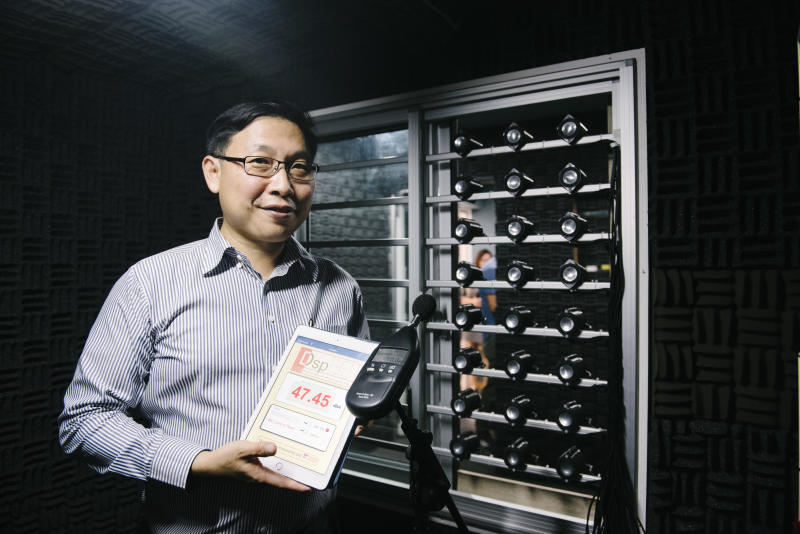NTU device can reduce noise pollution by up to half, targeted for use in 2 to 3 years
Sign up now: Get ST's newsletters delivered to your inbox

Professor Gan Woon Seng of NTU, lead researcher of the team that developed a device that can reduce noise pollution entering buildings even while windows are wide open.
ST PHOTO: ALVIN HO
Follow topic:
SINGAPORE - Noise from busy roads, MRT tracks or construction activity may one day be less of a nuisance even when windows are wide open.
A new device being developed by researchers at Nanyang Technological University (NTU) can reduce noise by up to 50 per cent.
The small device - designed to be mounted on window grilles - uses "active noise control" technology found in high-end headphones that has been adapted for use in large open areas, NTU said on Monday (April 30).
While the technology is not new, this is the first time such an experiment is being done on a fully opened window, it said.
The device uses a special sound-emitting mechanism and is hooked up to a processing unit. Once noise is detected, it quickly emits "anti-noise" soundwaves that counters the invading noise, resulting in a softer ambient sound, NTU said.
"Our innovation not only computes the right amount and type of 'anti-noise' to emit, but also does it faster than noise can reach inside the building," said Professor Gan Woon Seng, director of the Centre for Infocomm Technology who led the research.
The team hopes to deploy the technology in commercial or residential areas here in two to three years.

"Noise is an underestimated threat. According to the World Health Organisation, noise is invisible pollution that can cause health issues from cardiovascular problems to hearing impairment," said Prof Gan.
"Compared to noise cancellation headphones, what we have achieved is far more technically challenging as we needed to control noise in a large open area, instead of just around the ear."
"Currently, at the prototype stage, about 24 devices are mounted onto a window grille during the controlled trials. Once we go into the next phase, we will be able to increase the efficiency of the device and integrate them into the window grille, reducing the number of devices," he said.
"Our goal is to have as few devices as possible but with the same effect of reducing noise pollution by half, and achieved using the least amount of energy."
Prof Gan said "double or triple paned windows are effective in reducing outside noise but that means keeping windows shut. Our objective is to reduce noise pollution while keeping windows open, and reduce the need for air-conditioning."
The project is supported by the Ministry of National Development and the National Research Foundation in the Prime Minister's Office, and comes under the "Land and Liveability National Innovation Challenge" research programme.
The researchers are also working with local government agencies to further improve the technology to make it viable for commercial and residential applications.
"We are already moving into the second phase of trials where we will be deploying this in real environments. ... The device is not just limited to residential spaces. It can be used for keeping noise out of vehicles and trains, or even keeping machinery noise within the factory premises," Prof Gan said.
"The uniqueness of our technology is that it leverages machine learning to identify the bad sounds from good ones and eliminate those which are deemed a nuisance - such as construction noises, from the chirping of birds.
"We are targeting certain types of continuous ambient noise. The device is not a silver bullet for all kinds of noise," he added.

